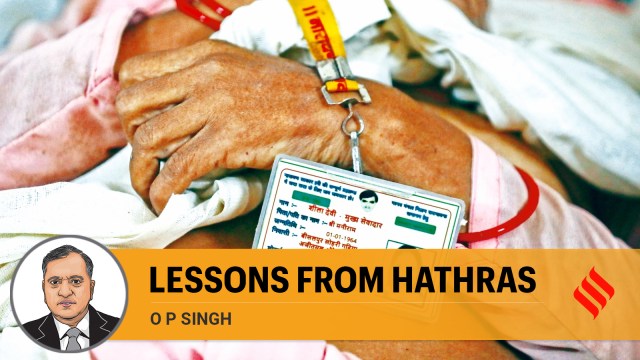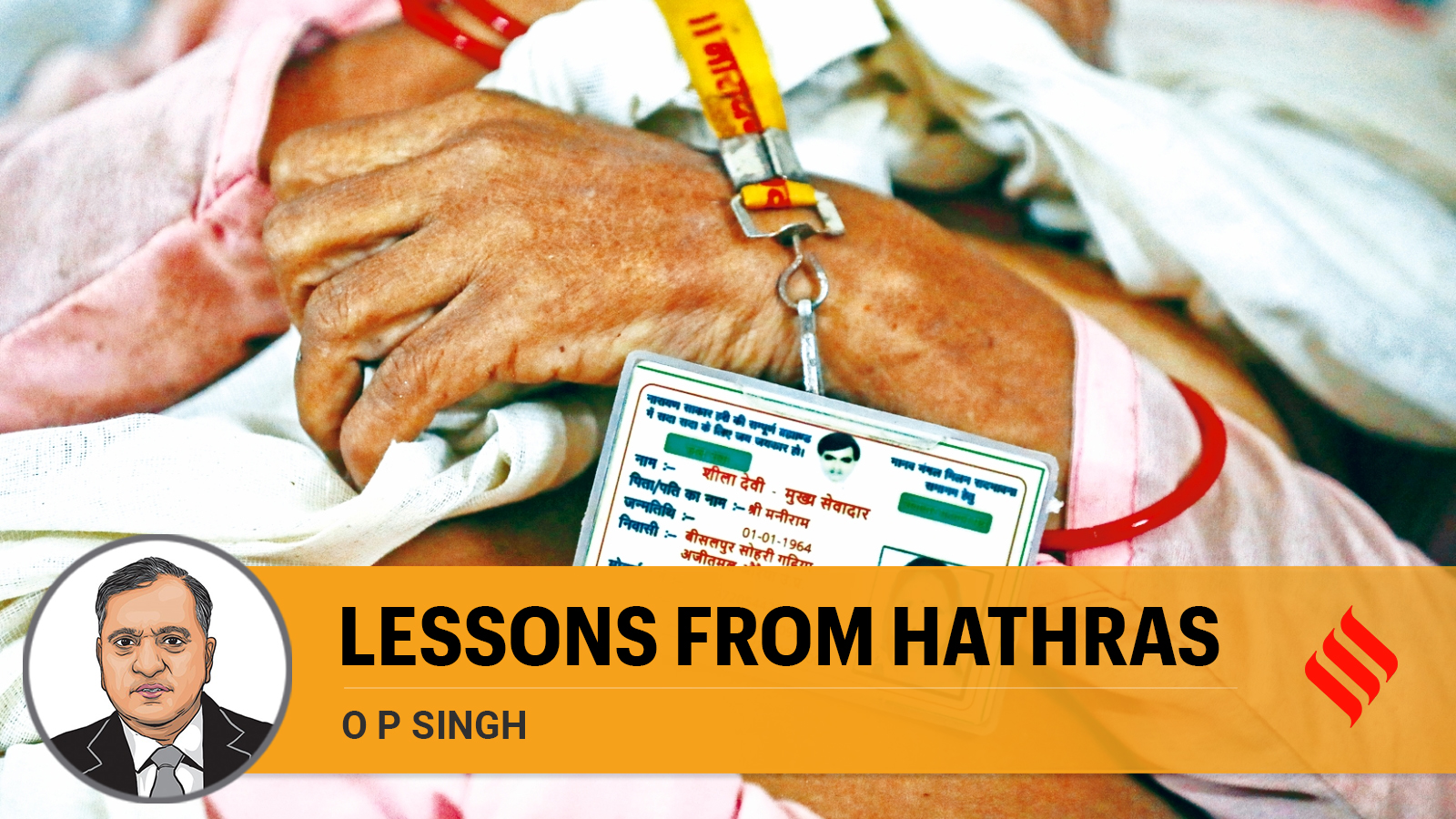
The stampede in Hathras on June 2 is another in a long line of tragedies manufactured by a lack of sense for science. I cannot speak with authority on what occurred in Hathras on the day of the stampede; a probe is underway, hopefully, those responsible will be held to account. But I suspect a few factors were at play — overcrowding, religious fervour and mismanagement. A satsang organised by Suraj Pal alias Bhole Baba, attended by scores of devotees, one of many all over the country on any given day, turned ugly, claiming 121 lives. That this was a private event should not have mattered.
Regardless of whether a gathering is private or public, certain protocols have to be adhered to. These standard operating procedures (SOPs) must not be relaxed for any reason or any person. The organiser has to approach the police station concerned for permission and provide a multitude of details. The police allow or reject the application based on their assessment — an assessment based on credible information or “intelligence”. The size and nature of the crowd, its density given the capacity of the location, possible escape routes and a response mechanism in case of an emergency all need to be anticipated.
From my understanding, people from the state and outside started arriving at the venue some three to four days before D-Day. Local intelligence should have been aware of and responded to this. The police’s preparedness in this event seems lacking; the foresight to have a plan that is comprehensive enough to tackle crowds that ultimately ended up being as big as 2.5 lakh people was simply missing.
Although not comparable with the Hathras mishap, given the difference in scale, in my time as the head of the police force (SSP) at Kumbh Mela in 1993-1994, this was my takeaway: Strategy, not numbers, is the key. Instead of deploying thousands of officers for an event, we have to learn how to strategically place perhaps much fewer in the right spots with the right considerations in mind.
In the event of a private gathering, the organiser has to be involved in the security planning just as much. Bhole Baba’s organisation had 12,000 sewadars (volunteers) on the ground but they were not structured workers with fixed responsibilities. Ideally, here, meetings with all the stakeholders and working out a game plan should have been routine. The police department cannot provide thousands of policemen on end for the innumerable gatherings that happen across the country. They are short of the requisite resources for that; it is simply not practical. Given that, there should be a certain synergy between organisers and the police force.
India is a religious country. In UP, you have thousands of such processions in any given area every year. The police are hard-pressed to manage such crowds. It is a two-fold challenge. One, it is a matter of faith. This introduces certain sensitivities into the equation. Indians do not take well to people interfering with faith and religion. Second, private organisers have a lot to gain, unfortunately, from desperate people. The nexus between faith and money created and fueled by godmen and other political, and cultural leaders complicates the process. Organisers tend to make choices that align with profit more than safety, and SOPs are hard to adhere to, given the tension between faith and procedure. In my opinion, this factor — the nature of a gathering and how to manage it with the requisite sensitivity and due diligence — should be formalised and introduced into the SOP.
This is what authorities have always done — adapting and learning from things that went wrong. The 1954 Kumbh was another dark chapter. From there, lessons learnt led to the reframing of policies and that process has never stopped. When I was managing Kumbh, we had volunteers down in the riverbed to ensure no devotee was taking a dip longer than 40 seconds so that there was no pile-up behind and any potential for a catastrophe.
Finally, technology has to be roped in. We live in the age of social media, crowds are easier to gather now than ever before. The police cannot wish technology away. But they can use it to their advantage. When an Integrated Command and Control Centre was started in Uttar Pradesh, we started using it to anticipate crowd density using AI and used CCTVs to our advantage. It aided our process. No policeman can afford to turn away from technology. Anticipating events is our job. Adapting is not optional.
The writer is former DGP, UP police, and was SSP at Kumbh Mela (1993-1994)
(As told to Sukhmani Malik)



